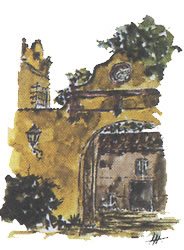Metachromatic leukodystrophy (Metachromatic leukodystrophy) - Genes ARSA and PSAP.
MLD is a hereditary disease characterized by the accumulation of sulfatide in cells. This accumulation especially affects cells in the nervous system that produce myelin. Nerve cells covered by myelin form a tissue called white matter. The accumulation of sulfatide in myelin producing cells causes progressive destruction of white matter in the entire (leukodystrophy) nervous system including the central nervous system and peripheral nervous system. In people affected by the disease, damage to the white matter causes progressive deterioration of intellectual functions and motor skills. Affected individuals also have peripheral neuropathy, incontinence, convulsions, paralysis, inability to speak, blindness and hearing loss.
The most common form of the disease, which represents between 50% and 60% of cases, is the late infantile form. Usually this form of the disease occurs in the second year of life. Affected children lose speech that have developed, become weak and develop problems walking. As the disease worsens, decreased muscle tone and subsequently increases to the point of stiffness. Individuals with late infantile form usually do not survive beyond infancy. Between 20% and 30% of individuals with MLD, onset is between 4 years old and adolescence. In this juvenile form, the first signs of the disease may be behavioral problems and increasing difficulties with schoolwork. The disease progression is slower in the late infantile form, and affected individuals can survive over about 20 years after diagnosis. The adult form of MLD represents approximately between 15% and 20% of cases. In this way, the first symptoms appear during adolescence or later. Usually, the first symptoms are psychiatric, such as delusions or hallucinations, and can lead to a diagnosis of schizophrenia. People with the adult form can survive over 20 to 30 years after diagnosis. During this time they may occur periods of relative stability and other periods of further decline.
This disease is due in most cases to mutations in the gene ARSA. Some individuals diagnosed with metachromatic leukodystrophy, mutations in the PSAP gene.
The ARSA gene, located on the long arm of chromosome 22 (22q13.33), encoding arylsulfatase enzyme A. This enzyme is found in the lysosomes, which helps break sulfatides. Sulfatides are a subgroup of abundant sphingolipids in the white matter of the nervous system, forming the myelin sheath covering nerve fibers, forming multiple layers that insulate and protect nerves.
Meanwhile, the PSAP gene, located on the long arm of chromosome 10 (10q21-q22), encoding prosaposin protein, which is involved in various biological functions, including the development of the nervous system and the reproductive system. Prosaposin is the precursor of four smaller proteins designated saposin A, B, C and D, which occur when cleaves prosaposin. The saposins are located in lysosomes and lysosomal enzymes help in the decomposition of sphingolipids. Saposin B protein acts with various enzymes to break sphingolipids. Their most critical biological function seems associated with arylsulfatase A enzyme (encoded from ARSA gene). Saposin B may also play a role in lipid transport to the outer surface of the cell so that can be recognized by the immune system. Meanwhile, the saposin C protein acts with the enzyme beta-glucocerebrosidase to decompose another sphingolipid called glucocerebrosidase. The saposins A and D are also involved in the processing of sphingolipids.
They have identified more than 110 mutations in the ARSA gene and several mutations in the PSAP gene in people with MLD. Mutations in these genes result in a reduced ability to decompose sulfatides, which leads to accumulation of these substances in cells. Sulfatides excess is toxic to the nervous system, because it gradually destroys the myelin producing cells, leading to leukodystrophy and impaired function of the nervous system. In some cases, individuals with very low activity of arylsulfatase A show no symptoms of metachromatic leukodystrophy. This variation is called deficiency seudoarilsulfatasa and is present in about 5% and 10% of Europeans and Americans.
This disease is inherited in an autosomal recessive pattern, that is, both copies of the gene in every cell must have mutations for alteration is expressed. The parents of an individual with an autosomal recessive disease have a copy of the mutated gene, but usually show no signs and symptoms of the disease.
Tests in IVAMI: in IVAMI perform detection of mutations associated with metachromatic leukodystrophy, by complete PCR amplification of the exons of ARSA and PSAP genes, respectively, and subsequent sequencing.
Samples recommended: EDTA blood collected for separation of blood leukocytes, or impregnated sample card with dried blood (IVAMI may mail the card to deposit the blood sample).



